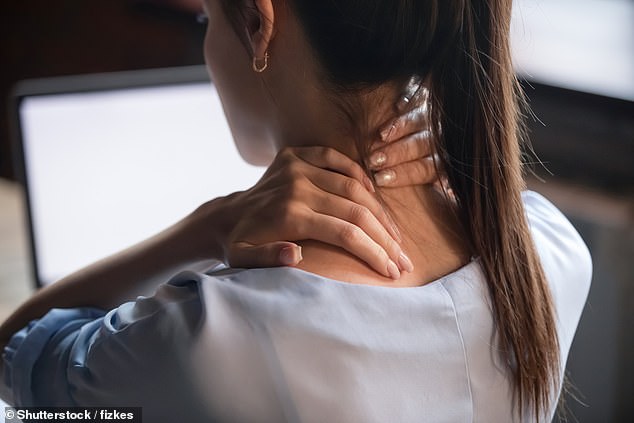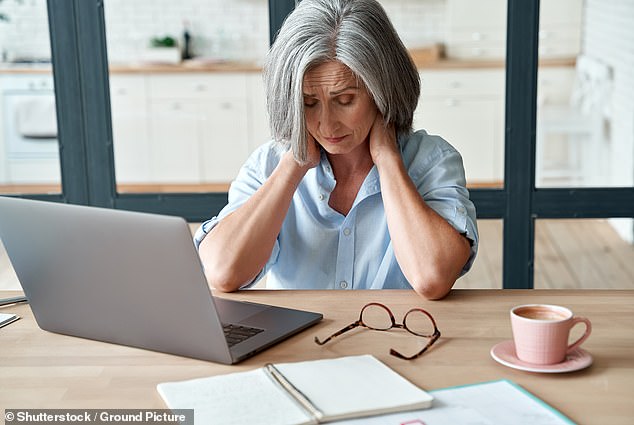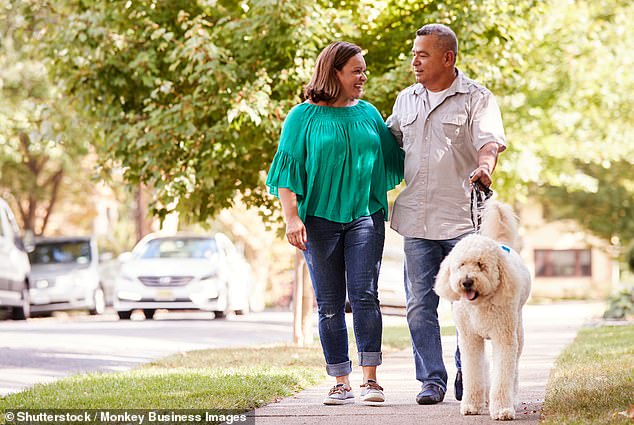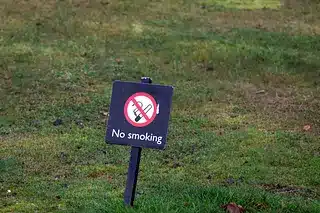A leading spine surgeon has revealed the simple daily habits he follows to protect his spine—and what to do if you’re one of the millions who suffers from back pain.
Dr Colin Natalia, a consultant at The Princess Grace Hospital, blamed sedentary lifestyles for the epidemic—but said having an office job doesn’t have to equate to back pain.
‘The spine is an amazing feat of engineering. But it wasn’t designed for sitting still,’ he said.
‘It is designed to move. It doesn’t matter how ergonomic your office chair is, the height of your screen or even having a standing desk.
‘It’s not the answer to keeping your spine healthy. Movement is.’
Whilst he acknowledged that these alterations may help improve posture, the best thing to do is take regular breaks.
‘I set a chime on my [computer] desktop every hour signalling that it is time to get up and move,’ he suggested.
According to the back expert, movement is absolutely crucial to spine health, as this exercises the muscles.

According to Dr Natalia sedentary lifestyles spent looking at screens will cause havoc for your back as you age
Tissue loading, which occurs when the muscles contract, is optimal for skeletal health.
When this followed up by a period of rest—for example returning to your desk—the tissue becomes more resistant, building up back strength.
He said this is particularly crucial for under 35-year-olds, who are still building bone mass, making it a critical time to implement practices that promote bone density and strength.
Peak bone mass, which typically occurs between 25 and 35-years-old is the highest amount of bone tissue an individual can attain.
Failure to build strong bones during this phase of life can increase the risk of osteoporosis—a health condition that weakens bones—and fractures in later life.
‘It’s all about forming habits when you’re young,’ Dr Natalia warned. ‘If you don’t use it, you’ll lose it.’
But, it’s not too late for people who have surpassed the building block years, he added.
‘My main message to everyone is to stay active, don’t be afraid and push through the pain.’

Whilst he said building bone density and strength is crucial for young people it is never too late to incorporate movement into your daily routine to protect your spine
Whilst this might seem counter-intuitive, Dr Natalia said the best thing for people who have experienced back pain is to stay active.
‘People become really inactive when they are suffering from back pain, partly because they are scared of it becoming something more serious and partly because they have been told that rest is the best thing for them.
‘This couldn’t be further from the truth,’ he explained.
Whilst he acknowledged that some pain is more severe than others, he said it is a common misconception that when something hurts it is causing harm.
‘People too often confuse hurt and harm’, he explained. ‘Whilst pushing through may be painful, it is often the best thing you can do for your spine.
‘Remember modification is always better than stopping altogether.’
For those who are more prone to back pain, Dr Natalia suggested swapping out high impact workouts like running for something more gentle, like pilates or swimming when the pain is worse.

Norwegian and Danish researchers have recently revealed that being on your feet for over an hour-and-a-half every day could slash the risk of chronic lower back pain
However if the pain is persistent and does not improve after six weeks of rest, taking over-the-counter painkillers such as Ibuprofen and physical therapy, this could be a red-flag warning sign of something more serious.
At this point, Dr Natalia advises contacting your GP who may refer you to a specialist for MRI imaging.
However, he said that 90 per cent of cases do no progress to this stage and that most people should get better with a combination of physical therapy and painkillers.
‘The best piece of advice I can give is don’t be scared of your back and stay active.’
As well as exercising regularly, making sure to stand up every hour, Dr Natalia said he also focuses on his diet, taking probiotics every day—which promote healthy bacteria in the gut—avoiding processed foods and refined sugar and eating a largely anti-inflammatory diet.
The surgeons top tips come as new research has suggested that only one in ten treatments for back pain actually work.
Experts from the University of New South Wales found that just one treatment for acute lower back pain and five treatments for chronic—or long-term—back pain were ‘efficacious’.
These included non-steroid anti-inflammatory drugs (NSAIDs), such as ibuprofen, for short-term back pain.
For long-term back pain, the treatments found to be effective were exercise, spinal manipulative therapy, taping, antidepressants and drugs that target the pain receptors transient receptor potential vanilloid 1 (TRPV1).
The findings will come as a blow to the millions of Americans and Brits who suffer from back pain, which can often be debilitating.
It is the most common form of pain experienced by adults, with lower back pain affecting six in ten people in the UK, and eight in ten in the US.
However, there is usually no immediately identifiable cause.












